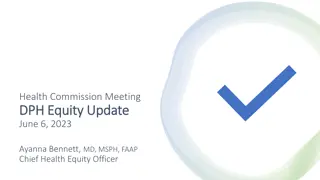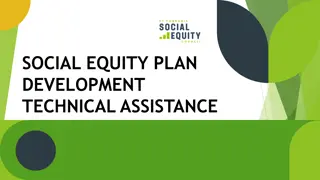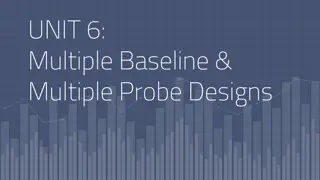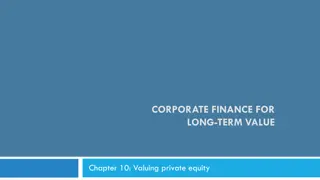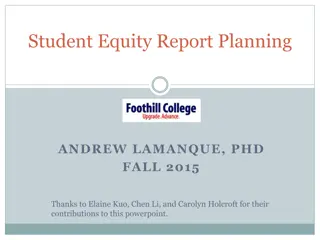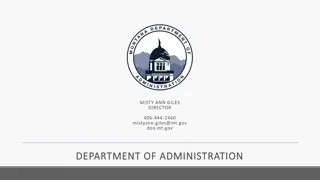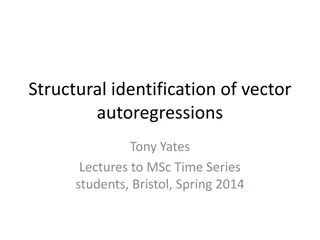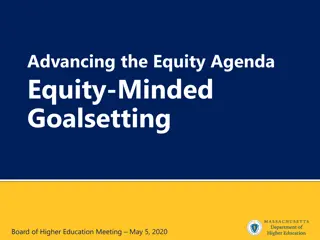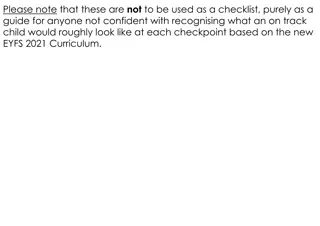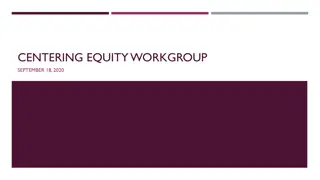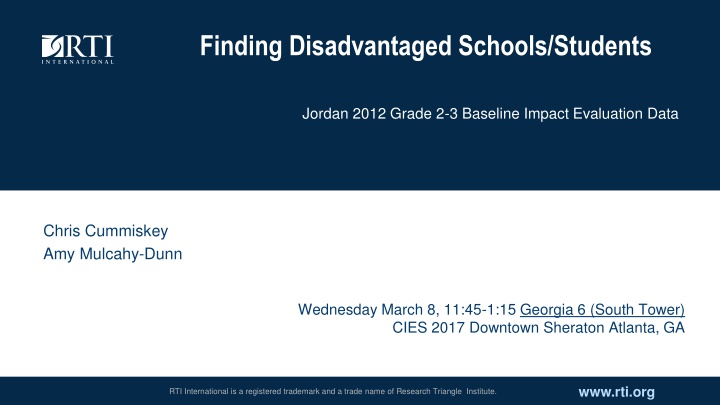
Disadvantaged Schools in Jordan: Impact Evaluation Data
Explore the baseline impact evaluation data of disadvantaged schools and students in Jordan. This study aims to identify disadvantaged schools, provide support, and improve reading abilities among disadvantaged students. Assumptions, steps, and specific actions are outlined to address challenges and enhance interventions.
Download Presentation

Please find below an Image/Link to download the presentation.
The content on the website is provided AS IS for your information and personal use only. It may not be sold, licensed, or shared on other websites without obtaining consent from the author. If you encounter any issues during the download, it is possible that the publisher has removed the file from their server.
You are allowed to download the files provided on this website for personal or commercial use, subject to the condition that they are used lawfully. All files are the property of their respective owners.
The content on the website is provided AS IS for your information and personal use only. It may not be sold, licensed, or shared on other websites without obtaining consent from the author.
E N D
Presentation Transcript
Finding Disadvantaged Schools/Students Jordan 2012 Grade 2-3 Baseline Impact Evaluation Data Chris Cummiskey Amy Mulcahy-Dunn Wednesday March 8, 11:45-1:15 Georgia 6 (South Tower) CIES 2017 Downtown Sheraton Atlanta, GA www.rti.org RTI International is a registered trademark and a trade name of Research Triangle Institute.
Purpose: Identify disadvantaged schools at baseline. Provide additional support to these schools (within context of the intervention). Increase the disadvantaged students reading ability in treatment schools. Mean Oral Reading Fluency Mean Oral Reading Fluency 35 30 35 30 25 Oral Reading 25 20 Fluency 20 15 15 10 10 5 5 0 0 2012 2012 2014 2014 Treatment-Advantaged Treatment-Disadvantaged Treatment-Advantaged Treatment-Disadvantaged
Assumptions Internal Evaluation Team Collects relevant demographic/home/community/school/classroom information Strong communication among Evaluation-Monitoring-Intervention teams Treatment schools will be monitored by competent staff. Staff with strong contextual understanding of the population of interest. Intervention team will take the needed steps to provide the disadvantaged schools with the additional needed support. Evaluation plans to follow same schools and/or students from disadvantaged schools [descriptive understanding].
Steps Define disadvantaged schools. Identify disadvantaged schools using baseline data. Compare Disadvantaged vs Non-Disadvantaged Inform the monitoring team WHERE they are and WHAT they look like: Demographic, home/community, school/classroom environment What is out of control vs. within control of the planned intervention. 1. 2. 3. 4. 1. 2. Further investigates these schools/classrooms/students/communities in more detail for stronger contextual understanding. What do these schools/classrooms/communities look like? Why are they struggling? And what of these factors could be controlled by the intervention group. 5. 1. 2. Intervention team adjusts their intervention according to the contextual findings. 6. NOTE: Be explicitly about are completely out of the control of the intervention components.
Step 1: Define Disadvantaged using Baseline Oral Reading Fluency (Arabic) n = 2,976 Grade2/3 students at treatment schools Region [South] Coef. Std. Err. t P>t Southern Region All Boys Schools Lowest Wealth Index 8.9 4.7 1.0 0.9 9.4 5.0 0.0 0.0 North Middle School Gender [All Boys] 9.9 7.2 1.2 0.9 8.4 8.0 0.0 0.0 All Girls Mixed Remember: main purpose = improve literacy Wealth index [Low] 3.4 6.7 9.5 1.1 1.1 1.1 3.1 6.3 8.4 0.0 0.0 0.0 Mid-Low Mid-High High 11.7 1.2 10.1 0.0 _cons
Step 2: Identify (Pinpoint) Disadvantaged Treatment Schools Disadvantaged: Lowest SES Mean class Orf<10wmp [~34 of 150 classrooms]
Step 3: Compare Disadvantaged vs. Non-Disadvantaged Schools Non- Disadvantage n=2672 Disadvantaged n=294 Students Region Southern Region All Boys Schools Lowest Wealth Index South North Middle 34.81 36.6 28.59 13.61 26.87 59.52 School type All boys All girls Mixed 24.29 17.81 57.9 47.62 3.4 48.98
Step 3: Compare Disadvantaged vs. Non-Disadvantaged Schools Not in the intervention scope Possibly in the intervention scope Non- Disadvantage n=2672 Non- Disadvantage Disadvant n=270 Disadvant n=294 Students Teachers n=30 Teacher Gender Time to read in Class 36.8 40.53 Male 21.85 78.15 14.29 85.71 Female Someone reads at home 60.09 52.68 Ate before school 84.8 81.16 Take privated reading lessons 11.79 16.92
Step 4: Communicate findings to Monitoring Team Inform the monitoring team WHERE they are and WHAT they look like: 1. Demographic, home/community, school/classroom environment 2. What is out of control vs. within control of the planned intervention.
Step 5: Further Investigation: Stronger Contextual Understanding What do these schools/classrooms/communities look like? Why are under performing? What could the intervention do to provide relevant support?
Step 6: Adjust Intervention Intervention team adjusts their intervention according to the contextual findings
Midline: Subsample of longitudinal data. Mean Oral Reading Fluency 35 30 25 20 15 10 Is this really happening? 5 0 2012 2014 Treatment-Advantaged Treatment-Disadvantaged
Thank you Chris Cummiskey ccummiskey@rti.org Amy Mulcahy Dunn amulcahy-dunn@rti.org




